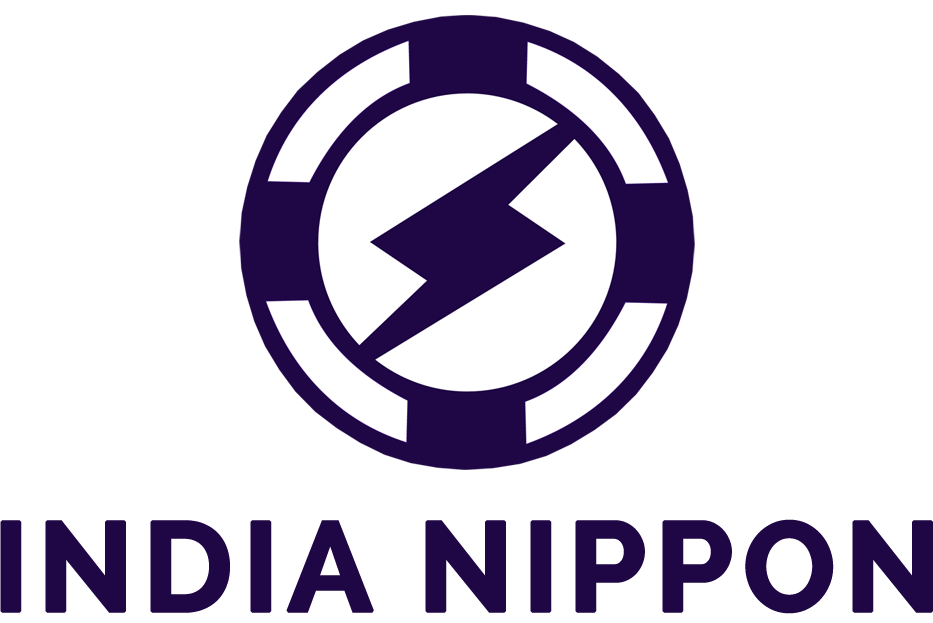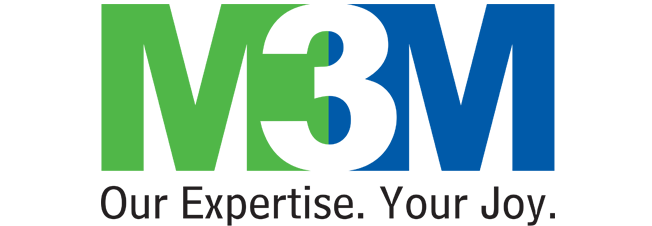Procol • September 30, 2025
What is supply chain risk management (SCRM)? | Definition & steps
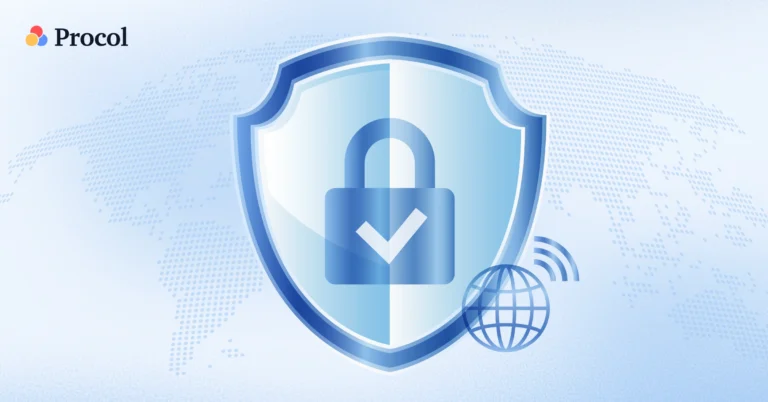
In an increasingly interconnected world, organizations rely on smooth supply chain operations to succeed. Supply chain risk management (SCRM) involves assessing problems that could affect vendors & partners. As supply chains become increasingly digital, the risk of cyberattacks and disruptions is on the rise. Companies that build resilience can quickly handle these challenges and stay ahead of competitors. That’s why many organizations are now focusing on supply chain visibility and resilience, utilizing technology to track suppliers, stay compliant, mitigate risks, and enhance performance.
Let’s examine how technology can transform the supply chain risk management process into a decisive advantage for both proactive strategies and business growth.
What is supply chain risk management?
Supply chain risk management (SCRM) is a process that identifies, assesses, and mitigates potential threats to the supply chain, including issues with vendors, third parties, and digital systems. As global supply chains become increasingly interconnected, organizations face growing challenges such as cyberattacks and operational disruptions. An effective SCRM focuses more on building resilience, improving visibility, and leveraging technology to monitor suppliers, ensure compliance, mitigate risks, and maintain continuity, thereby turning potential vulnerabilities into strategic strengths.
Why is supply chain risk management important in 2025?
This process helps businesses to manage unexpected issues such as supplier delays, shortages, port congestion, or climate-related events. By identifying and mitigating these risks, companies can avoid delays, manage costs effectively, and maintain customer satisfaction. It also improves visibility, helps in procurement strategy, and enables businesses to recover quickly in the event of disruptions. More than just saving money, it focuses on building resilience and long-term growth.
1. Protects business continuity
Helps prevent shutdowns, delays, and losses by maintaining stable and profitable operations during disruptions. Also reduces unexpected costs by preparing for risks in advance.
2. Safeguards reputation
Ensures consistent delivery, protecting brand image and maintaining customer loyalty. Strengthens customer confidence by showing reliability in tough times.
3. Builds resilience
Prepares businesses to handle shortages, congestion, cyberattacks, and climate risks with agility.Encourages flexibility through backup suppliers and alternative strategies.
4. Improves visibility
Provides transparency to spot risks early, respond quickly, and reduce downtime.Enhances decision-making with real-time data and monitoring tools.
5. Ensures compliance
Meets regulatory requirements and customer expectations for ethical, sustainable practices. Reduces legal risks and penalties by staying aligned with standards.
6. Supports long-term growth
Balances efficiency with resilience by investing in strong processes, technology, and supplier networks. Drives competitiveness by focusing on stability and innovation.
Top 12 risks that affect the supply chain
Supply chains are exposed to multiple risks simultaneously that can disrupt operations and impact their procurement performance. Understanding these risks is the primary step toward building resilience and preparing effective responses. Here are twelve major types of risk in supply chain risk management that every organization should be aware of:
1. Global political unrest
Disruptions stemming from geopolitical conflicts, trade wars, policy changes, or unstable governments that affect access to raw materials or shipping routes. Such instability can lead to sudden regulatory changes, tariffs, or sanctions that directly disrupt global supply networks.
2. Economy and inflation
Rising costs (labor, fuel, energy), decreasing purchasing power, and recession threats put pressure on supply chain costs and profitability. Economic downturns may also reduce demand, forcing businesses to adjust production levels and renegotiate supplier contracts.
3. Climate-driven disruptions
Severe weather events (floods, heatwaves, storms, wildfires) damage infrastructure, delay transport, or disrupt production. As climate risks intensify, companies must also face rising insurance costs and stricter environmental regulations.
4. Non-compliance with ESG and related mandates
Failure to meet environmental, social, and governance standards can result in legal penalties, reputational harm, and operational disruptions. In addition, non-compliance can limit access to financing and partnerships as investors increasingly prioritize ESG criteria.
5. Cyber threats
Attacks on information systems, IoT devices, supplier networks, or data leaks increase vulnerability in interconnected, digital supply chains. A single breach can compromise sensitive data, disrupt operations, and damage trust with customers and partners.
6. Product / raw materials shortages
Scarcity of needed inputs may result from demand spikes, supply interruptions, or logistical difficulties. Such shortages often lead to increased costs, production delays, and higher dependency on alternative suppliers.
7. Logistics risks
Issues in transportation or shipping (port closures, strikes, freight bottlenecks), last-mile delivery challenges, or delays in warehousing/distribution create uncertainty. Disruptions in logistics also raise inventory costs and affect service levels, impacting customer satisfaction.
8. Demand volatility
Rapid or unpredictable changes in customer demand, short product lifecycles, and shifting trends make forecasting difficult. Companies risk overproduction, underproduction, or excess inventory, all of which strain resources and margins.
9. Lack of transparency
Inadequate visibility over suppliers, operations, or material provenance makes it challenging to monitor risks, quality, or ethical compliance. Limited transparency also increases the chance of fraud, hidden costs, or reputational damage.
10. Business information risks
Poor data quality, inconsistent information across systems, and delayed reporting hamper decision-making and risk analysis. This can lead to missed opportunities, compliance failures, and reduced agility in responding to disruptions.
11. Supply-chain labor risks
Labor shortages, strikes, low workforce skills, or health and safety issues reduce production capacity and efficiency. Workforce instability may also lead to delayed deliveries, increased operating costs, and reduced supplier reliability.
12. Technology & infrastructure failure
Breakdowns in critical infrastructure such as power, IT networks, or transportation systems can halt or slow operations. System outages not only disrupt workflows but may also result in data loss, financial penalties, and reputational setbacks.
What are the challenges of supply chain risk management?
Implementing SCRM is challenging due to so many factors. Global supply chains are highly complex, and many organizations struggle with limited data, a lack of collaboration, and resistance to change. And even if they provide sufficient data to identify risks, they may still be unwilling to adopt new practices. Another case is that risks range from poor visibility and weak frameworks to regulatory pressure and cyber threats, which makes it difficult to track details closely at every step.
So, here are six significant challenges businesses face during the supply chain risk management process:
1. Process Complexity and Poor Visibility
Global supply chains encompass numerous suppliers, routes, and processes, making it challenging to track every detail. Limited visibility can lead to unexpected disruptions. Investing in integrated platforms, such as ERP systems, helps improve transparency and detect issues early.
2. Insufficient Risk Assessment Practices
Without a clear framework, businesses may overlook critical risks. A robust supply chain risk assessment framework should incorporate both qualitative and quantitative metrics, be adaptable, and be regularly updated to address emerging threats.
3. Organizational Change Resistance
New practices often face internal resistance. Building a culture of risk awareness through training, leadership support, and cross-functional collaboration can facilitate smoother adoption.
4. Supplier Non-Compliance
When suppliers fail to meet standards or service-level agreements, disruptions and reputational risks follow. Regular audits, clear SLAs, and monitoring tools can help ensure compliance and accountability.
5. Environmental and Regulatory Changes
Shifting regulations, climate events, and environmental standards increase uncertainty. Businesses must stay updated on requirements and integrate these factors into their risk management strategies.
6. Cybersecurity Threat
As supply chains become increasingly digital, threats such as ransomware and data breaches pose significant risks. Strong security protocols, regular audits, and employee training are essential to safeguard sensitive information.
Benefits of supply chain risk management
A strong SCRM strategy not only protects businesses from disruptions but also creates long-term value. Enhancing visibility, fostering collaboration, and facilitating faster responses enable companies to remain resilient and competitive. By identifying risks & developing correct plans, organisations can prepare for and respond to unexpected events, ensuring supply chain security across their operations. SCRM offers a way to support sustainable practices, learn procurement skills , and ensure that all parts of the supply chain are limiting environmental impact.
Some of the key benefits include:
1. Better visibility and control
Strong supply chain risk management strategies provide end-to-end visibility across suppliers, inventory, logistics, and operations, ensuring comprehensive oversight. With real-time insights into potential risks, disruptions, or bottlenecks, companies can act before problems escalate. This proactive control allows businesses to optimize resources, balance supply and demand, and make faster, more informed decisions that keep the entire supply chain running smoothly.
2. Stronger supplier compliance and collaboration
By closely aligning with suppliers and monitoring their performance, organizations can enhance contract compliance and minimize the risk of unexpected failures. Open communication and shared risk data foster stronger partnerships, ensuring suppliers are reliable and resilient. This not only prevents costly disruptions but also creates a more stable and collaborative supply chain network.
3. Faster and more confident responses
When disruptions occur, having standardized processes and access to real-time data helps companies respond quickly and effectively. Instead of relying on guesswork, businesses can make informed decisions that minimize delays, reduce unnecessary costs, and uphold customer commitments. A structured response framework ensures continuity, even in the face of unexpected events.
4. Improved regulatory compliance and reporting
Many industries are required to adhere to strict regulations related to safety, sustainability, trade, or data security. Supply chain risk mitigation facilitates meeting these requirements by maintaining accurate records, providing reliable reporting, and ensuring consistent processes. This reduces the risk of penalties, legal complications, or reputational harm while demonstrating accountability to customers and regulators.
5. Competitive advantage in uncertain markets
In today’s unpredictable environment, businesses that manage risks effectively can continue delivering products and services when others struggle. This reliability protects revenue, safeguards customer trust, and enhances the company’s reputation. Over time, the ability to adapt quickly and maintain procurement performance creates a strong competitive edge that supports long-term growth.
What are the steps to supply chain risk management?
For businesses to implement a well-planned supply chain risk management framework to secure their supplier relationships and prevent supply chain errors. Steps that reveal solutions enabling organizations to pinpoint areas where they can focus their resources. By following a precise and repeatable approach, an organisation can better understand its risks, set priorities, and prepare for disruptions before they grow.
Below, you can find the top three main phases of the risk management process that help decrease risk within a company.
1. Risk Identification
The first step is to recognize potential risks that could disrupt the supply chain. This requires a structured process to assess suppliers, operations, logistics, and external factors, including economic, political, and environmental conditions. Early identification ensures that issues are detected before they escalate into major problems.
2. Risk assessment
Risk assessment and prioritization involve evaluating the likelihood of risks occurring and the potential impact they may have on the supply chain. By analyzing these factors, organizations can gain a clear picture of which risks pose the greatest threat. Based on this, risks are classified as high, medium, or low to ensure that the most critical ones receive immediate attention and resources.
3. Risk Mitigation
Once risks are identified, organizations must develop and implement effective strategies to minimize their impact. This may include creating contingency plans, diversifying suppliers, improving contractual safeguards, or investing in technology and automation. The goal is to reduce vulnerabilities and maintain smooth operations even in challenging situations.
4. Risk Monitoring
Risk management is not a one-time activity; it requires continuous monitoring. Regular tracking of supply chain performance, supplier compliance, and market conditions helps ensure that identified risks remain under control. Ongoing monitoring also enables organizations to detect new threats quickly and take timely corrective action, thereby safeguarding long-term resilience.
What kind of strategies will you use to reduce supply chain risk?
Effectively assessing risks and building supply chain assessments with lower exposure can reduce the frequency of supply chain risk mitigation and disruptions, although it cannot eliminate them entirely. During disruptions, companies require advanced methods to model potential events.
There is one example, the stress test approach given by MIT professor David Simchi-Levi, which uses two key measures:
Time to Recover (TTR)
How long does it take a supply chain node to return to full capacity after a disruption?
Time to Survive (TTS)
How long can the supply chain continue meeting demand after a facility disruption?
Calculating TTR and TTS across different scenarios enables organizations to understand the financial impacts, design contingency plans, and adjust their inventory strategies. Implementing this management process requires building analytical skills within the organisation so that it is empowered to provide data from third parties and maintain actionable insights.
How can technology contribute to supply chain risk management?
These technologies enhance real-time visibility through the use of IoT sensors and GPS tracking. Through predictive analysis, identify new ways to track, analyze, and optimize operations, making processes more efficient and resilient, which reduces human error, facilitates data-driven decision-making for risk mitigation, and provides a proactive management approach.
A few technologies that help organizations in controlling supply chain disruptions are mentioned below.
1. Tracking and Monitoring
Sensors, GPS, and IoT devices provide real-time data throughout the supply chain, from raw materials to production and distribution. This data helps identify risks, optimize operations, and find areas for improvement.
2. Automation
Robotics and automated systems increase efficiency, reduce human errors, and can operate in hazardous conditions, lowering risk.
3. Blockchain
This secure, transparent ledger improves traceability, making it easier to verify products and track their movement.
4. Artificial Intelligence
AI and machine learning analyze large datasets to find efficient routes, spot disruptions, and assess environmental impact. Simulation tools also help predict risks and plan contingencies.
5. Cloud Computing
Cloud platforms enable scalable data storage and sharing, enhancing collaboration throughout the entire supply chain.
What are supply chain risk management tools?
Effective SCRM is crucial for businesses to anticipate and respond to potential disruptions. As supply chains become more complex, the need for practical tools alongside software solutions grows. These tools help organizations identify vulnerabilities, make informed decisions, and maintain smooth operations even in volatile conditions.
Below, you can get to know the key tools:
1. Risk Assessment Templates
Risk assessment templates enable businesses to identify, evaluate, and prioritize potential risks associated with their activities.
2. Dashboards and Reporting Tools
Dashboards and reporting tools visualize data to provide insights into performance displays, enabling stakeholders to quickly understand supply chain performance and identify anomalies.
3. Supplier Scorecards
Supplier scorecards are a vendor performance evaluation tool that tracks supplier effectiveness, ranks suppliers based on their performance metrics, and aids informed decisions about vendor relationships.
4. Simulation Models
By using simulation models that model different scenarios, businesses can anticipate potential outcomes and plan responses under various conditions.
5. Decision Trees
Decision trees provide structured decision-making by considering various risks and their impacts.
6. Supply Chain Mapping
Supply chain mapping works as a visual map that highlights vulnerabilities and potential bottlenecks across the entire supply chain.
7. Sensing Technologies (IoT Sensors)
Sensing technologies primarily monitor critical conditions, such as temperature and humidity, to ensure product quality.
How will Procol elevate supply chain risk management strategies for the organisation?
Procol supports organizations in managing supply chain risks by providing a clear view of suppliers, inventory, and logistics. Its supply chain risk management solution helps maintain transparency, facilitates easy onboarding for suppliers, manages contracts and compliance, reduces manual processes through an intuitive dashboard, enables faster response to potential disruptions, monitors supplier performance, and ensures compliance with contracts and regulations. By collecting and analyzing real-time supplier data, businesses can identify risks early and take action before they escalate. This process has a significant impact on risk scoring suppliers, improves compliance, and enhances the procurement process in terms of cost control, benefiting the organisation in all conditions.
These tools for reporting and scenario analysis allow organizations to plan for various situations, assess the impact of disruptions, and develop contingency strategies. Overall, it helps companies improve visibility, respond faster to risks, and maintain smoother, more resilient supply chain operations.
Conclusion
Effective supply chain risk management is vital for ensuring business continuity, safeguarding profitability, and strengthening resilience in today’s interconnected world. By identifying, assessing, and mitigating risks, organizations can respond quickly to disruptions, improve visibility, and ensure compliance. Technologies such as AI, blockchain, and cloud computing enhance monitoring, analysis, and collaboration throughout the supply chain. It helps in anticipating issues, planning risks, and maintaining smoother operations, turning potential vulnerabilities into strategic advantages.
Explore more from Procol
Discover expert tips, how-to guides, industry insights, and the latest procurement trends.
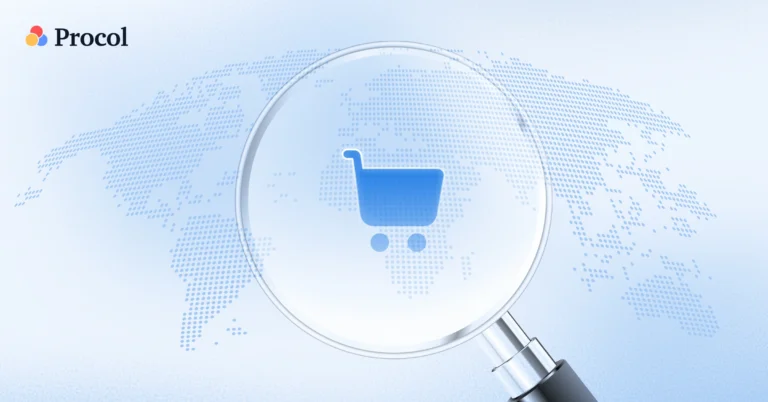
Strategic sourcing management software & sourcing solutions: a guide
Learn how strategic sourcing software helps optimize processes, key features and...
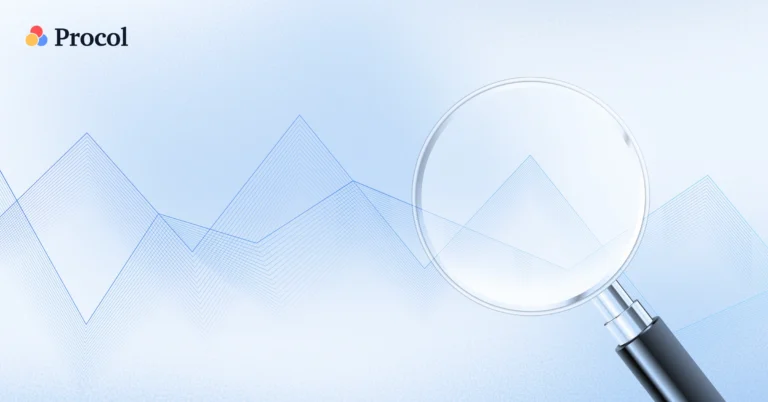
Sourcing strategies explained: Types, process, benefits, and examples
Sourcing strategies are important for creating effective, efficient, and resilient supply...
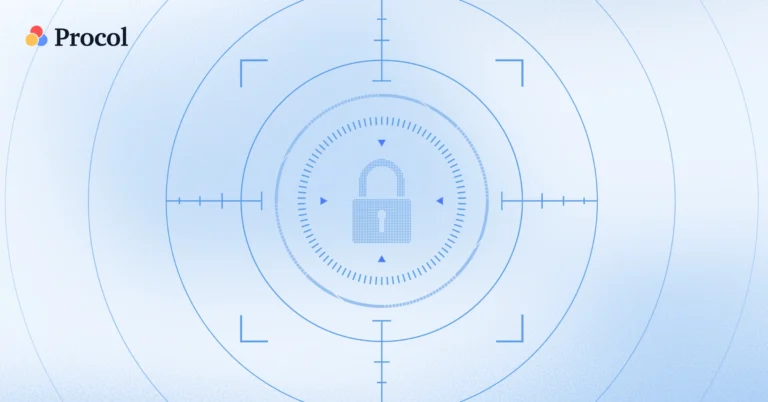
What is third party risk management (TPRM)? | A complete guide
Learn about third party risk management, TPRM assessment, components of the...
